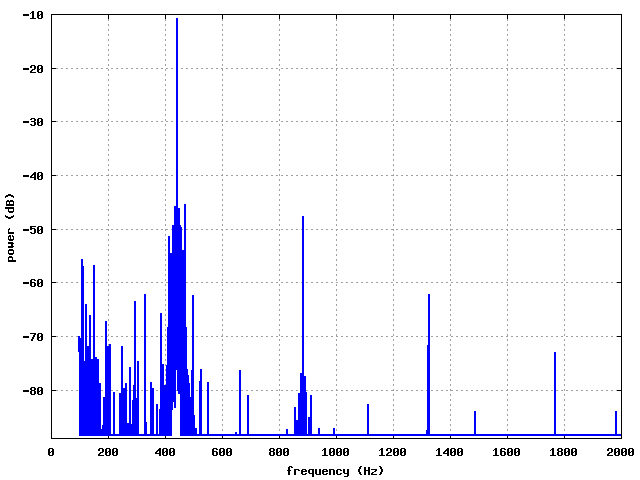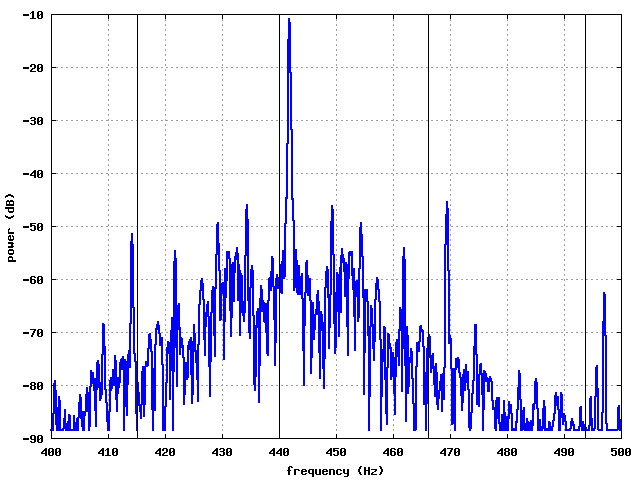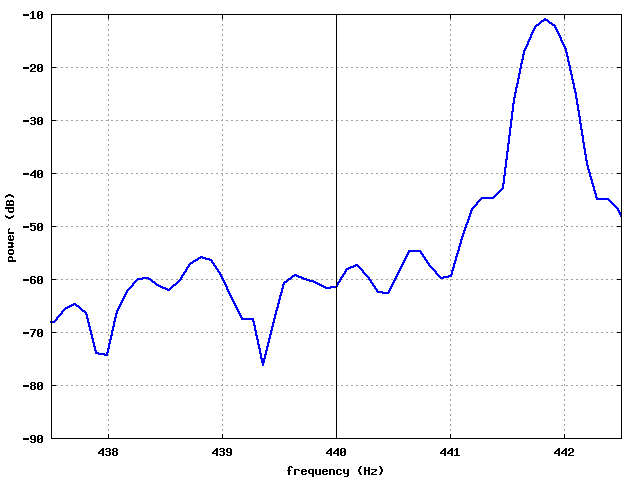| Air
models |
Music |
Trips |
The
cellar |
LASSO
LASSO stands for Lionel's additive synthesis simple organ. It is my
attempt at creating a sound similar to the sound of the
Hammond B3
organ.
While it has already been done by others (either as software
synthesizers, such as Beatrix,
or as standalone keyboards), I have started this project for many
reasons. Among the best ones are:
- When I have started to fix my GEM H300 (also a WIP), the sound coming
from the embedded Leslie was asking "why don't you try to mimic the
real B3 sound?".
- I have been playing with homemade electronic synthesizers for years,
and I intend to keep on experimenting.
- I would be really happy (if not more) to build my own drawbar organ.
Right now, LASSO is no more than my other synth attempts: It is neither
a working organ, nor a standalone keyboard. It may be a never ending
project. Right now, it is a mix of Octave
scripts and C code (not available). It is based on a thorough study of
the original Hammond patents, on the schematics and on the available
technical documents, such as service manuals. It is a bottom-up
approach (I started from scratch in January 2006) relying upon my
favorite method to generate a sine wave, the direct
digital synthesis method or DDS.
Everything evolves quite quickly, so I intend to put some sound samples
here. For more information, you can have a look at the french forum
devoted to tonewheels organ, Le
bistrot des roufonistes. My nickname on this forum is
leTigreBleu (more on this here).
For the sake of quality, I will use the flac
audio format (free lossless audio codec). Many audio players, on
various platforms, currently accept this format. I also provide the
original wav files, zipped.
Further analysis of the B3 tonewheel signal (Saturday, 21st, March 2009)
Analyse plus profonde du signal du B3 (samedi 21 mars 2009)
After more than two years, I am back on the very same subject: the
simulation of the B3 signal. The method is, this time, different: I
will spend my time analysing signals from a real B3, instead of working
only from patents and technical documents. I have been kindly provided
with a 96 kHz, 24 bits sample of a real B3 signal (without Leslie, as I
wanted for ages). Thank you to the generous donator of the very
valuable signal. Now, I am using Octave
to process the signal, so as to clearly understand what a tonewheel
signal is made of. I will focus on the A440 (440 Hz) and on the A880
(880 Hz).
First of all, it is not a pure sine wave (not at all). You can see
for yourself on the figures below that the power spectrum, computed
with fast Fourier transforms and a Blackman window, is quite... well,
let's say full of interesting signals!
Après plus de deux ans, je reviens sur le même sujet : la
simulation du signal du B3. Cette fois, la méthode est
différente : je vais analyser un signal issu d'un vrai B3, au
lieu de travailler à partir de brevets et de documents
techniques. J'ai eu la chance d'obtenir d'un musicien sympathique un
enregistrement à 96 kHz et en 24 bits d'un vrai B3 (sans Leslie,
comme je le souhaitais depuis un temps fou). Merci au
généreux donateur du signal. J'utilise maintenant Octave
pour traiter le signal, histoire de voir de quoi un signal de roue
phonique est fait. Je travaille sur le la à 440 Hz (et sur le la
à 880 Hz).
Bon, ce n'est pas une sinusoïde bien pure. Vous pouvez voir
ci-dessous des spectres calculés par transformée de
Fourier rapide avec une fenêtre de Blackman. C'est... plein de
monde !

The wav file of the Hammond B3 sample at 440 Hz is available for download, for you to analyse it.
The blue curve is the real power spectrum. It has a peak near 440 Hz.
Le fichier wav contenant l'échantillon à 440 Hz du Hammond B3 est disponible en téléchargement ici pour analyse.
La courbe en bleu est le spectre
du signal. Elle présente un maximum vers 440 Hz.

Now, the vertical, black lines are the theoretical frequencies of the tonewheels.
A closer look. Strange, isn't it?
Les lignes noires verticales sont les fréquences
théoriques des roues phoniques.
On s'approche. Quelque chose vous surprend ?

I cannot explain this. I thought the frequency would be, according to
the various gears, exactly 440 Hz. It does not seem to be the case: the maximum is at 441.8 Hz, which means it is biased. Any
explaination?
Je n'arrive pas à expliquer cela. Je croyais que le la serait
exactement à 440 Hz, d'après les rapports de
réduction des pignons. Cela ne semble pas être le cas : je
trouve 441,8 Hz, ce qui veut dire qu'il y a un biais sur la
fréquence.
Quelqu'un a-t-il une explication ?
In case this is specific to the 440 Hz, I have also analyzed the next
octave frequency, which sloud be 880 Hz. Have a look! The Hammond B3
sample for 880 Hz is avaible for download here as a wav file.
Des fois que ce soit un problème spécifique au 440 Hz,
j'ai aussi analysé le la une octave plus haut, donc à 880
Hz (en théorie). Le fichier wav contenant l'échantillon
à 880 Hz du Hammond B3 est disponible en
téléchargement ici.



Second sounds from LASSO! (Monday,
4th, December 2006)
All files are supposed to be the voltage at the G-G output. All files
are based upon MIDI files from the bistrot des roufonistes (Midi
files).
One is from Bruno Micheli ("blues suedois"), the other from Romain
("ONIONS"). The same settings were used for the two manuals: drawbar
8886, percusion 2nd, fast, normal volume for one track, and 00443 for
the other track. I did not use the bass track of ONIONS, as I only have
two lasso generators running on my poor old Pentium 3 (along with the
midi sequencer, and the wave recorder).
The files are in ogg format and in mp3 (they are quite big, i.e.
greater than 1 MB). LAME
3.96.1 was used to encode in mp3, while oggenc 1.01 was used
for the ogg files.
- brunoBluesSuedD6888P1NF_D00443Mono (ogg,
mp3)
- onionD6888P1NF_D00443Mono (ogg, mp3)
First sounds from LASSO! (Saturday,
18th, November 2006)
All files are supposed to be the voltage at the G-G output. All files
are based upon the same sequence of notes.
Tools used to edit and encode these files:
- Audacity
- FLAC
- Zip
Note that
the files starting with D000P do not
have a sustained tone, so as to ease percussion listening.
- clickD008: drawbar 008 (flac,
zipped wav)
- D008PNF2: drawbar 008, percussion ON, 2nd, normal, fast (flac, zipped wav)
- D000PNF2: drawbar 000, percussion ON, 2nd, normal, fast (flac, zipped wav)
- D000PNS2: drawbar 000, percussion ON, 2nd, normal, slow (flac, zipped wav)
- D000PSF2: drawbar 000, percussion ON, 2nd, soft, fast (flac, zipped wav)





